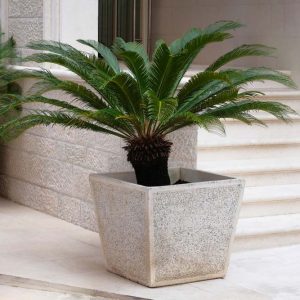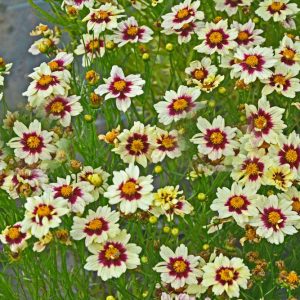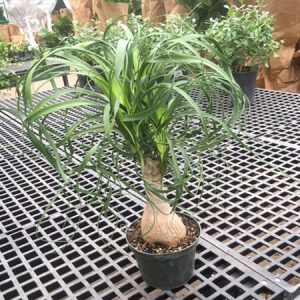Description
Hydrangea –
There are about 100 species of deciduous and evergreen shrubs and climbers, rarely trees, in this genus. They occur in woodland in Eastern Asia and North and South America. Grown mainly for their large, showy flower heads, many hydrangeas also have ornamental, flaky, peeling bark when mature, and attractive foliage with good autumn color. The leaves are broadly to narrowly ovate, or lance shaped, toothed, and either opposite or in whorls of 3. The flat, domed, or conical, terminal flower heads consist of corymbs or panicles of both tiny fertile flowers and larger sterile flowers with showy, 4 petal-like sepals.
Cultivars of H. macrophylla are divided into 2 groups: lacecaps have flattened flower heads with small fertile flowers in the centers, surrounded by larger sterile flowers, Hortensias (mophead hydrangeas) have nearly spherical flower heads of large sterile flowers.
The flower color of hydrangeas is affected by acidity or alkalinity of the soil. Acidic soil containing aluminum produce blue flowers, soil with a pH greater than 6.0 produces reds and pink flowers. White flowers are not affected by pH. H. macrophylla can change their color by dressing with aluminum sulphate for blue and with lime for red.
Hydrangeas are useful for a range of garden site: they are excellent as specimen plants or in group plantings, in a shrub border, or in containers. Climbers can be used to clothe a shaded wall or fence, or grow up tree trunks. The flower heads may be dried for use in arrangements.
All parts of hydrangeas may cause mild stomach upset if ingested, contact with the foliage may aggravate skin allergies.
Grow in moist but well drained, moderately fertile, humus rich soil in sun or partial shade, provide shelter from cold, drying winds. Most hydrangeas become chlorotic in alkaline soil. Reblooming and/or remontant H. macrophylla produce flowers on current season’s wood so bloom it less likely to be lost to incorrect pruning or cold.
Prone to gray mold, slugs, powdery mildew, rust, ringspot virus, leaf spots, honey fungus, aphids, scale insects, and spider mites.
H. macrophylla ‘All Summer Beauty’ – Bigleaf Hydrangea – Garden Hydrangea – Florist’s Hydrangea – This rounded, deciduous shrub from coastal Japan grows 3-4′ feet tall and 8′ feet wide. It produces broadly ovate, coarsely toothed, glossy, dark green leaves, to 8″ long. In mid and late summer it bears mophead, 6-8″ across, of profuse, dark blue flowers, pinker on soil near neutral. This species is rare in cultivation but there’s garden varieties derived from it. They are suitable for coastal gardens.
zones 6-9





